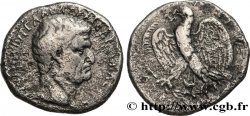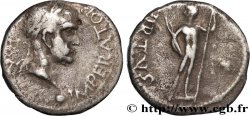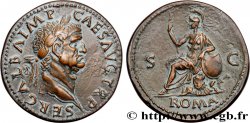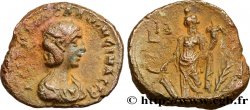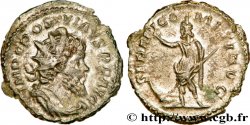недоступный.
Товар уже продан в нашем интернет-магазине (2013)
Цена: : 120.00 €
Товар уже продан в нашем интернет-магазине (2013)
Цена: : 120.00 €
Тип Tétradrachme syro-phénicien
Дата: 68
Монетный двор / Город: Antioche, Syrie, Séleucie et Piérie
Металл: silver
Диаметр: 24 mm
Ориентация осей монеты: 12 h.
Вес: 14,25 g.
Ссылки в каталоге: :
Происхождение:
Cet exemplaire est le 0096_041, il provient de la trouvaille dite de Banias
Лицевая сторона
Аверс: описание: Tête laurée et diadèmée de Galba à droite (O°) une étoile à huit branches perlées devant le visage de l’empereur dans le champ.
Аверс: легенда: GALBAS KAISAR AUTOKRATWR SEBASTOS
Аверс: перевод: Galba césar empereur auguste.
Обратная сторона
Реверс: Описание: Aigle debout à gauche sur un foudre, les ailes déployées ; dans le champ à gauche, une palme verticale.
Реверс: легенда: ETOUS NEOU IEROU A
Реверс: перевод: Nouvelle année sainte An 1 du règne.
Комментарий
La première émission “officielle” du règne, portant l’année régnale. L’aigle a toujours un foudre entre les griffes et la palme dans le champ, mais une étoile apparaît devant le buste de l’empereur, dont nous ignorons le sens. On remarque par ailleurs que les aigles des frappes de ce graveur ne portent pas la couronne dans le bec, probablement une distinction accordée à la ville émettrice, contrairement aux aigles du deuxième graveur de Galba. Les sigma sont traités en C.
Cette émission se différencie par plusieurs légendes (Prieur 94 à Prieur 96 A) cette variante étant la plus fréquente.
On doit remarquer un détail intriguant dans la couronne de laurier, le tracé d’une fine cordelette qui sépare les feuilles. Ce détail ne se retrouvant que sur cette émission, on peut supposer qu’il s’agit de la représentation d’un diadème, symbole du pouvoir politique dans les cités grecques, qui vient se rajouter au laurier, symbole du pouvoir militaire. Il est possible que ce soit simplement la technique utilisée par le graveur pour matérialiser la branche du laurier.
Dans la base TSP maintenue par Michel Prieur, cinquante-cinq exemplaires seulement sont maintenant répertoriés.
The first “official” issue of the reign, bearing the regnal year. The eagle still has a thunderbolt between its claws and the palm in the field, but a star appears in front of the emperor's bust, the meaning of which we do not know.. We also note that the eagles in the strikes of this engraver do not have the crown in the beak, probably a distinction granted to the issuing city, unlike the eagles of the second engraver of Galba. Sigmas are treated in C.
This show is distinguished by several legends (Prieur 94 to Prieur 96 A) this variant being the most frequent.
An intriguing detail in the laurel wreath should be noted: the outline of a thin cord separating the leaves.. Since this detail is only found on this issue, we can assume that it is the representation of a diadem, symbol of political power in Greek cities, which is added to the laurel, symbol of military power.. It is possible that this is simply the technique used by the engraver to materialize the laurel branch.
In the TSP database maintained by Michel Prieur, only fifty-five examples are now listed.
Cette émission se différencie par plusieurs légendes (Prieur 94 à Prieur 96 A) cette variante étant la plus fréquente.
On doit remarquer un détail intriguant dans la couronne de laurier, le tracé d’une fine cordelette qui sépare les feuilles. Ce détail ne se retrouvant que sur cette émission, on peut supposer qu’il s’agit de la représentation d’un diadème, symbole du pouvoir politique dans les cités grecques, qui vient se rajouter au laurier, symbole du pouvoir militaire. Il est possible que ce soit simplement la technique utilisée par le graveur pour matérialiser la branche du laurier.
Dans la base TSP maintenue par Michel Prieur, cinquante-cinq exemplaires seulement sont maintenant répertoriés.
The first “official” issue of the reign, bearing the regnal year. The eagle still has a thunderbolt between its claws and the palm in the field, but a star appears in front of the emperor's bust, the meaning of which we do not know.. We also note that the eagles in the strikes of this engraver do not have the crown in the beak, probably a distinction granted to the issuing city, unlike the eagles of the second engraver of Galba. Sigmas are treated in C.
This show is distinguished by several legends (Prieur 94 to Prieur 96 A) this variant being the most frequent.
An intriguing detail in the laurel wreath should be noted: the outline of a thin cord separating the leaves.. Since this detail is only found on this issue, we can assume that it is the representation of a diadem, symbol of political power in Greek cities, which is added to the laurel, symbol of military power.. It is possible that this is simply the technique used by the engraver to materialize the laurel branch.
In the TSP database maintained by Michel Prieur, only fifty-five examples are now listed.







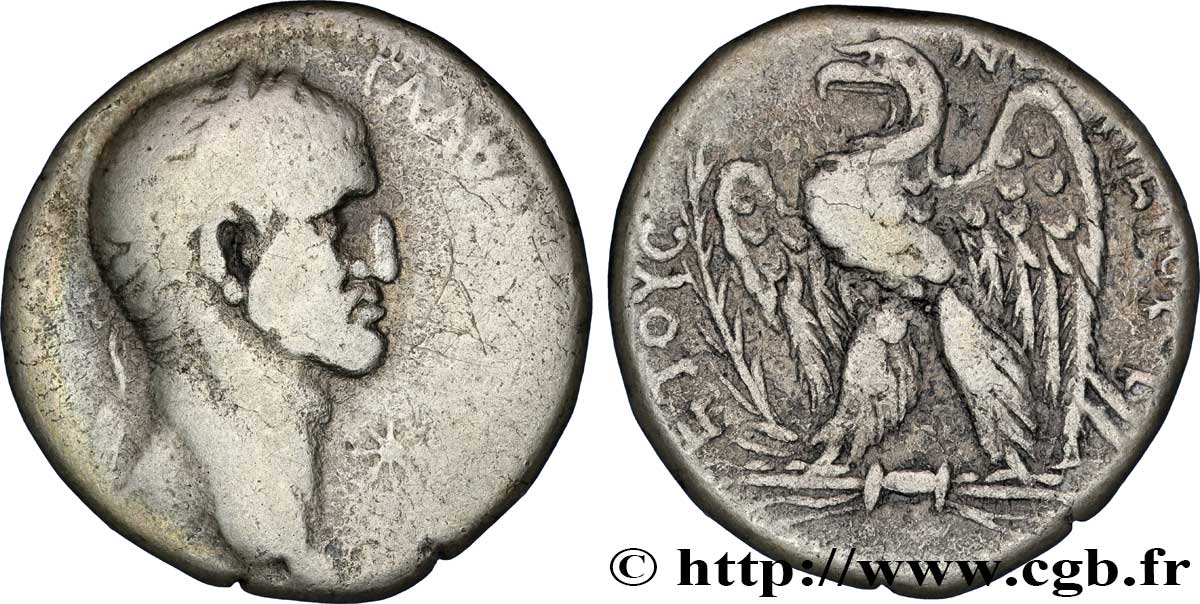
 Cообщить об ошибке
Cообщить об ошибке Распечатать страницу
Распечатать страницу Отправить мой выбор
Отправить мой выбор Задать вопрос
Задать вопрос Consign / sell
Consign / sell
 Информация
Информация
